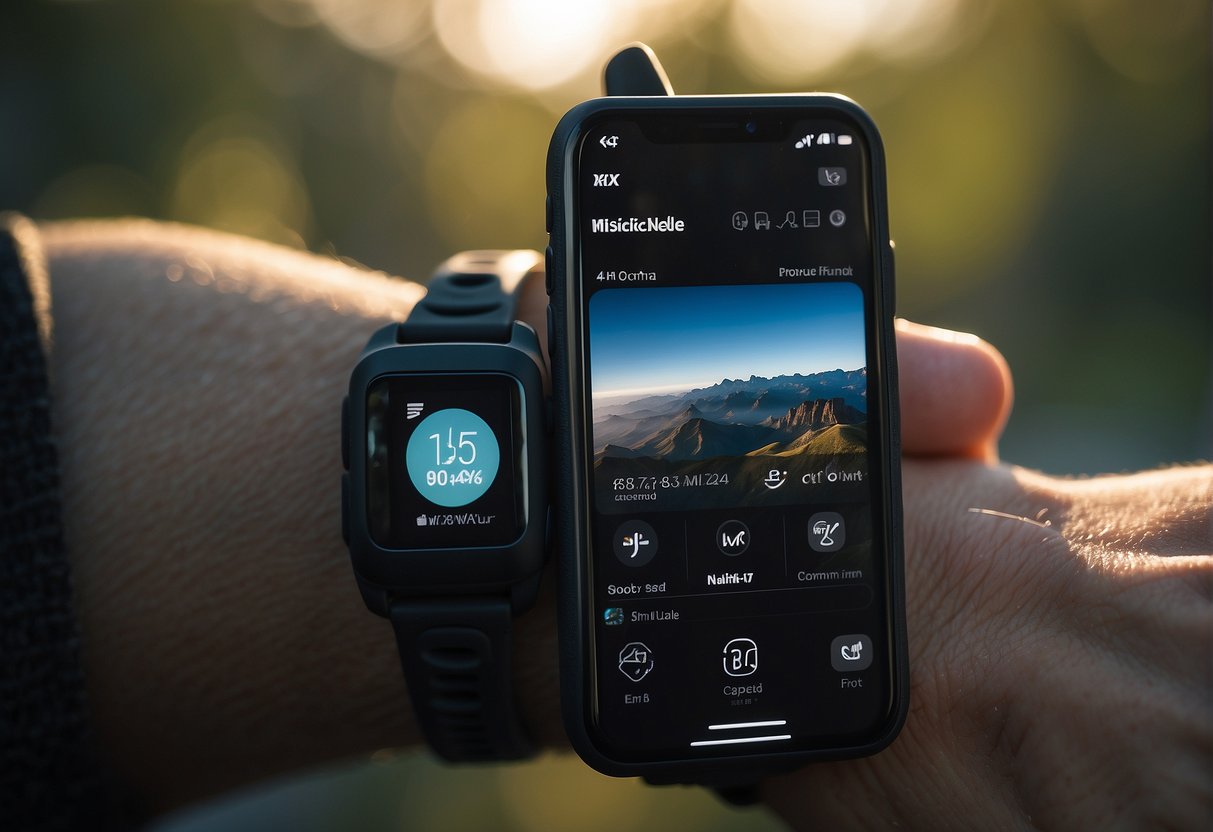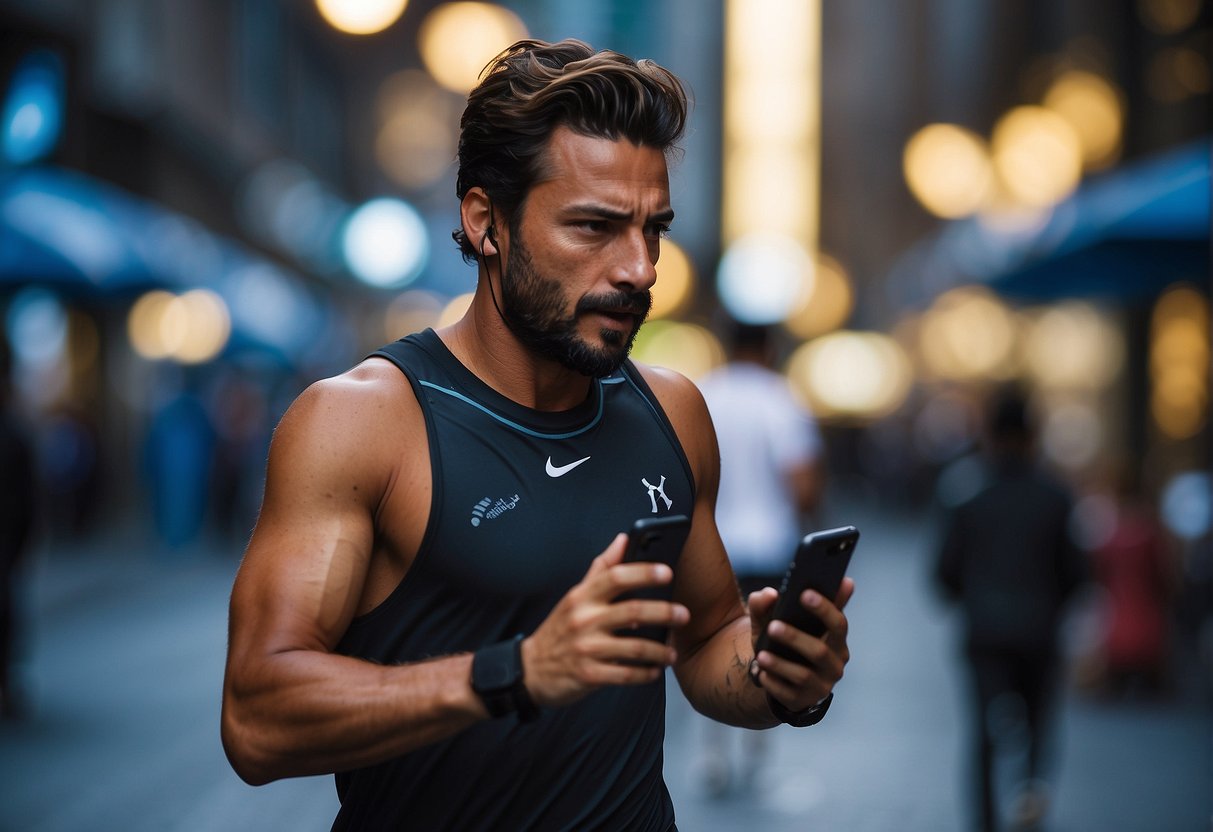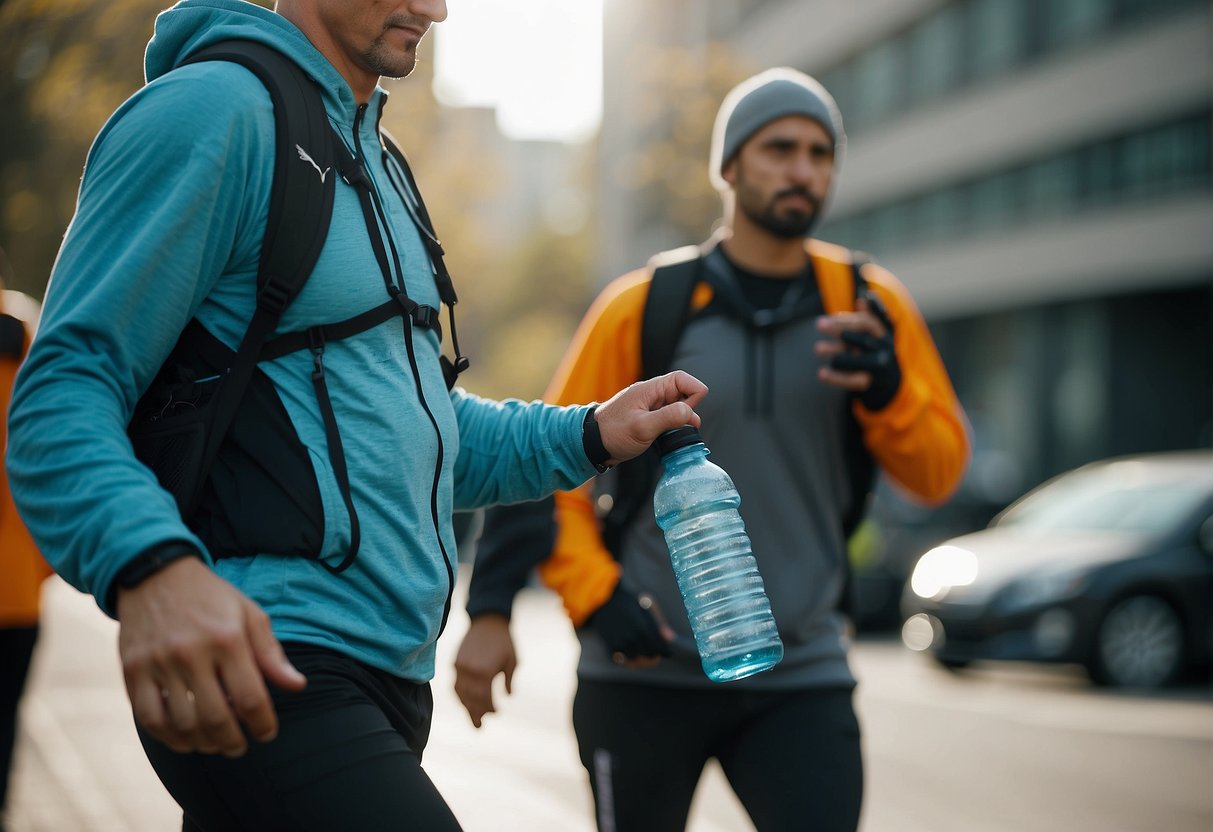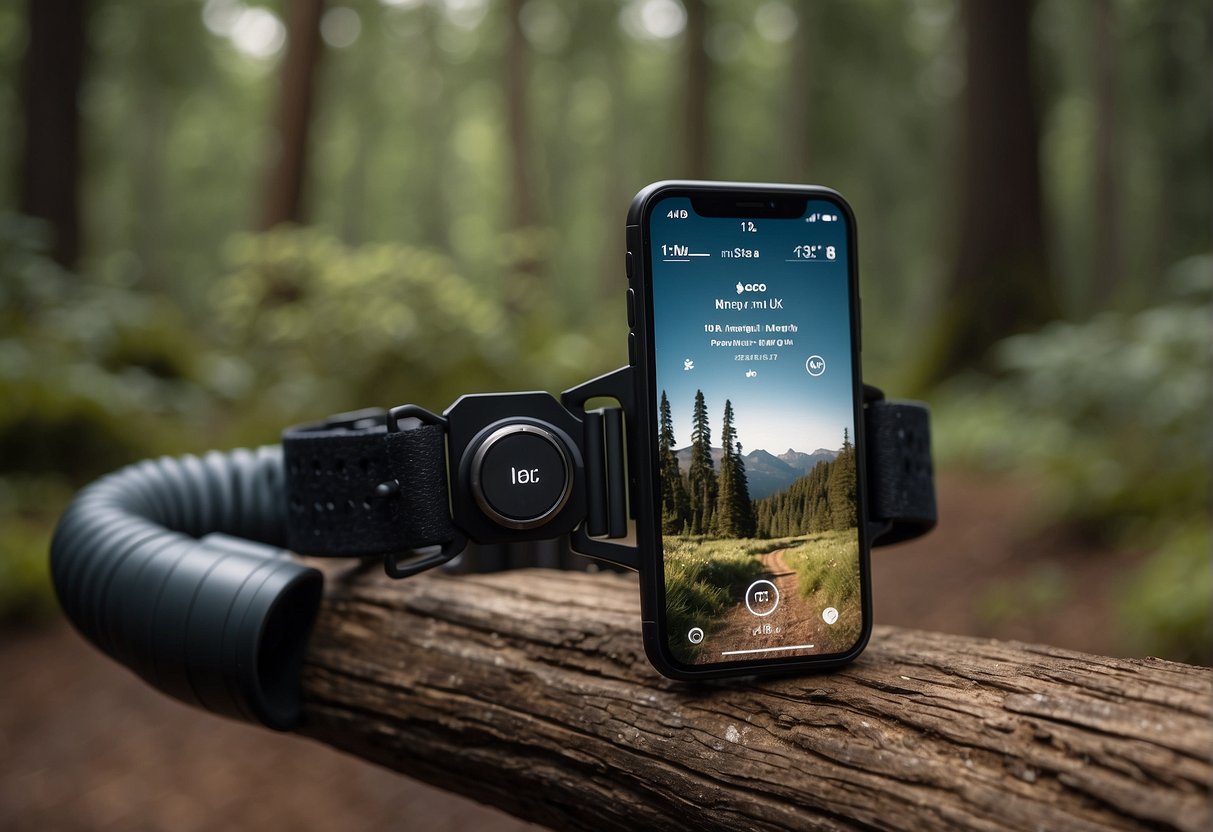When heading out for a run, many runners face the challenge of how to carry their phone. It’s a dilemma that intersects convenience and necessity.
On one hand, runners may wish to have their phone with them for safety purposes, to listen to music, or to track their running metrics with various apps. On the other hand, runners want to maintain comfort and avoid carrying unnecessary weight or feeling unbalanced.
Finding the right solution for carrying a phone while running requires consideration of both practicality and personal preference.

The choices for carrying phones range widely. From the minimalistic approach of tucking it into a waistband to the use of specialized running gear designed for phone carriage, there’s a solution that fits every type of runner.
It’s important to look for options that offer security to prevent phone loss or damage, while also allowing easy access in case it’s needed. Additionally, the ideal phone carrier should not interfere with the runner’s gait and should provide enough comfort for a seamless running experience.
With the numerous products available, such as armbands, waist packs, and even integrated solutions in running apparel, the right fit is out there.
Key Takeaways
- Runners need a balance of accessibility and comfort when carrying phones.
- Security and protection for the phone are top priorities.
- The ideal phone carrier should not disrupt the runner’s form or experience.
Choosing Your Phone Carrier: What to Do with Your Phone While Running

When selecting a phone carrier for running, the key factors to consider are comfort, accessibility, and security of the device.
Runners should choose an option that minimizes bounce and provides easy access to their phones while ensuring the phone remains secure throughout their activity.
Running Armbands
Armbands are a popular choice, offering a hands-free experience and typically made from stretchy materials such as neoprene or spandex. They are designed to hold the phone securely against the upper arm and often come with adjustable straps for a snug fit.
For example, the LifeProof Lifeactiv Armband is a well-regarded option due to its QuickMount system.
Running Belts
Running belts are another hands-free option, worn around the waist and made to carry not only phones but also other small essentials. They come in different sizes and styles, some resembling traditional belts with zippered compartments, while others like the Fitletic Running Belt have pouches that conform to the contours of your phone.
Running Vests
Running vests provide a secure and stable method to carry phones, especially useful for long-distance runners who might need additional space for hydration and nutrition. They are typically made of lightweight materials and distribute weight evenly across the shoulders and back.
Sports Bras with Pockets
Some sports bras now feature built-in pockets, an innovative way for female runners to carry their phones. The pockets are usually positioned to prevent movement and discomfort, making them a discreet and convenient option.
Compression Shorts and Tights
Compression shorts and running tights often include integrated phone pockets. They are designed to keep the phone pressed against the thigh or at the small of the back to reduce bounce.
Items like PinkBomb Men’s Running Shorts are an example, utilizing a tight pocket to secure the phone during physical activity.
Essential Features of Carrying Gear
Selecting the right gear to carry your phone while running is critical. It ensures that the device is protected and does not interfere with your activity. Here are the must-have features of carrying gear:
Quality and Durability
The material of the carrying gear should be able to withstand regular use and exposure to the elements. It ought to resist wear-and-tear from repetitive motion and potential moisture from being sweaty during runs.
Look for quality gear with reinforced seams and water-resistant fabrics.
Comfort and Fit
A good carrying solution should fit snugly without causing chafing or bouncing. It should be adjustable to cater to different body types and running styles.
The comfort of the runner is paramount; therefore, the material should be breathable and the design ergonomic.
Accessibility and Security
Your phone should be easily accessible for quick glances at apps or answering calls. However, security is equally important.
Opt for gear with zippered pockets or secure compartments to ensure your phone won’t fall out during your run.
Storage Space and Organization
While not bulky, the ideal carrying gear should offer adequate storage space for a phone and perhaps a few small items like keys or cards.
Some different models come with multiple compartments for better organization, keeping essentials within reach without compromising on the compactness or the balance of the gear.
Hydration Solutions While Running

Ensuring hydration while running is critical, and there are specifically designed products to help runners carry water efficiently. These solutions prioritize stability and ease of access to fluids during a run.
Hydration Belts
Hydration belts are a popular choice for runners looking to carry water bottles without using their hands. Typically, these belts come with one or more holsters that securely hold water bottles and often include pockets for carrying small items like keys or a smartphone.
For example, the Ultimate Direction belt is designed to minimize bounce, providing a comfortable and snug fit that adapts to the runner’s body.
Hydration Packs and Vests
Hydration packs and vests offer larger capacities for fluids and are ideal for longer runs or trail adventures. These wearable options distribute weight more evenly across the back or chest.
Vests, such as those from Ultimate Direction, frequently have front pockets, allowing runners to easily access their water bottles. On the other hand, hydration packs often come with a built-in reservoir or bladder, a tube, and a bite valve for convenient sipping without stopping.
Managing Essentials and Valuables
When running, it’s crucial to securely manage essentials like keys and cash, as well as credit cards and identification. Each item should be stored in a way that balances accessibility with security to prevent loss and distraction.
Keys and Cash
For keys and cash, runners should consider compact and secure options. A zippered pouch or running belt is a popular choice as it offers a snug fit that prevents jangling keys.
Additionally, cash, often needed for emergencies or small purchases, can be folded neatly and stored in the same pouch. Some runners might prefer to use a plastic bag to provide water resistance for these items, especially in unpredictable weather.
Credit Cards and Identification
Carrying credit cards and identification is easily managed with a specifically designed armband or race vest that includes secure pockets.
These should be selected for their close-fitting compartments that protect and offer quick access to these essentials without interrupting a runner’s motion. Identification is particularly important in case of an emergency, whereas credit cards offer a more versatile payment method than cash.
Technical Considerations for Runners
When running with a smartphone, it’s crucial for runners to consider how they will access their device, manage headphones, and prevent physical imbalances or injuries. This section explores practical ways to address these concerns.
Smartphone Accessibility
Runners should ensure that their smartphone is easily accessible during runs. Options include armbands, which allow for touch-screen interaction and running belts with secure pockets.
A runner might choose an armband with a clear, touchscreen-compatible cover to easily view and use the phone on the go. Some runners prefer running vests or hydration packs with phone compartments for longer distances.
Headphone Management
Effective headphone management can prevent mid-run distractions and discomfort.
Runners often use wireless headphones to avoid cords that can tangle or catch during movement. However, choosing headphones with a secure fit is essential to minimize the risk of losing them.
If one opts for wired headphones, running garments with a headphone cable loop can keep wires in place and reduce chafing.
Avoiding Physical Imbalances and Injuries
Holding a phone can cause imbalances in a runner’s stride. It’s suggested to use gear like running shorts with zippered pockets to distribute weight evenly without impacting running form.
For injury prevention, runners should avoid carrying their phone in-hand to prevent creating asymmetries that could lead to muscle strain or imbalance-related injuries.
Specialty Options and Alternatives

When running, traditional pockets may not suffice to securely carry a phone. Runners looking for specialized alternatives have several options that provide comfort and security regardless of pace or distance.
Koala Clip and Similar Attachments
The Koala Clip is a nifty solution for runners who prefer their phone be out of the way and sweat-free. This compact accessory clips onto the back of a sports bra or waistband, keeping the phone snug against the body without bounce.
Its design allows for easy access and can accommodate most phone sizes.
Adapting Gear for Bad Weather
Bad weather necessitates gear that protects phones from moisture while maintaining accessibility. Products like the FlipBelt and SPIbelt offer water-resistant options.
Many running coaches recommend such gear to keep electronics safe during rainy or snowy runs. It’s wise to prioritize water-resistant features when searching for running gear.
Creative Solutions for Carrying Your Phone
Beyond products specifically designed to carry a phone while running, there are creative solutions that can be adapted to a runner’s needs.
For example, modifying a small hydration pack or a travel money belt could provide a new means to carry a phone securely. Some runners choose to sew a pocket into existing running gear, customizing the fit to their phone and body shape.
Frequently Asked Questions
When incorporating a smartphone into your running routine, one navigates a variety of options for convenience and safety. Here, common concerns are addressed with focused solutions.
What are the best types of phone holders to use when running?
They may consider products like armbands, running belts, or clip-on holders as optimal for keeping their smartphone secure. These options for carrying your phone offer a hands-free experience, reducing the risk of dropping the device and allowing for easy access.
Can you recommend any DIY methods for carrying a phone during a run?
Runners can fashion their phone holders from everyday items like tube socks or elastic bands.
By cutting a tube sock to create a snug sleeve, they can create a simple, cost-effective solution that guards the phone against sweat and slipping.
How can I run with my phone if I don’t have any pockets?
For those without pockets, runners can utilize a waistpack or a snug-fitting armband. These accessories are designed to fit securely, preventing the phone from jostling.
Is it advisable to hold my phone in my hand while running?
Holding a phone in hand while running is not ideal due to the potential for an asymmetric gait and the risk of dropping the phone.
There are drawbacks to this method, such as lack of water protection and nowhere to store additional items.
What are some tips to prevent my phone from falling out during my run?
Securing the phone in a zippered pocket or a holder with a reliable closure system is a robust strategy to prevent it from falling out. Runners should opt for attire or accessories with secure compartments designed for movement.
What options are there for keeping my phone dry in case of rain while I’m running?
They can safeguard their device with water-resistant carriers or cases.
Runners might also utilize everyday items such as ziplock bags to provide a simple waterproofing solution.
